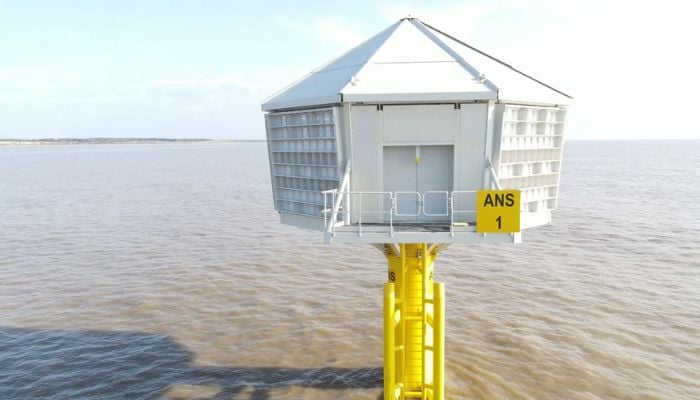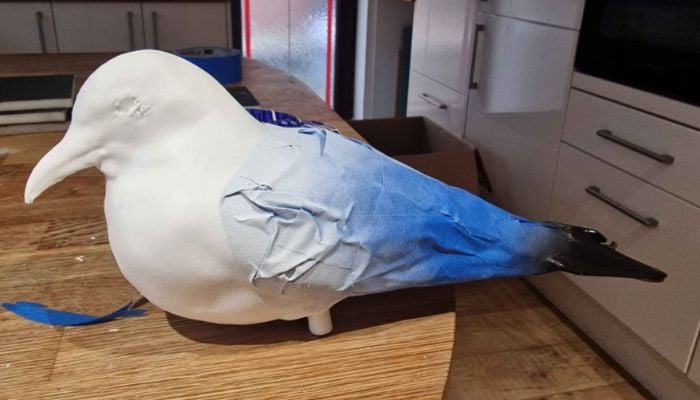3D Printed Decoy Encourages Nesting of Endangered Seabird

In late August, a fuzzy kittiwake chick hatched in an artificial nesting structure off the coast of Suffolk, England. Its neighbors? 3D printed kittiwake decoys.
Since 2020, renewable energy company Ørsted has been working on the Hornsea Project, an initiative to build four offshore wind farms in the UK’s North Sea. The size of these wind farms and their distance from the coast is record-breaking, and they have an incredible capacity to produce clean energy. The third of these farms, aptly named Hornsea 3, will be the site of the single largest commercial offshore wind farm in the world. It’s estimated to be complete by 2027, and once operational, Hornsea 3 will have a generating capacity of 2.9 GW—enough to power more than 3 million UK homes.

One of the artificial nesting structures (photo credit: Ørsted)
Hornsea wind farms are being implemented on the same coastline that’s home to kittiwakes, a vulnerable seabird species whose population is declining. Researchers attribute this decline to climate change and prey shortage, but to mitigate any additional impact the Hornsea wind farm might have, Ørsted was required to build three offshore artificial nesting structures to support the endangered birds. The nesting structures, while built in connection with Hornsea 3, are located far from the site. Each structure can accommodate around 500 breeding pairs, and on two of the three nesting structures, researchers placed decoy kittiwakes to encourage real birds to visit.
Why 3D Print Decoy Birds?
Bird decoys, especially of ducks, have been used to attract real birds for activities like hunting for centuries. Traditionally, these models were carved from wood, and today, many are made from molds or by other manufacturing methods. By contrast, 3D printing allows for unprecedented precision. 3DPrintingCornwall scanned taxidermy kittiwakes to obtain accurate metrics so that the positioning, proportions, and texture of the decoys would attract real birds. The decoys were fabricated with recycled plastic, and while the exact type of 3D printing used wasn’t noted, the company uses SLA, SLS, and FDM.

A decoy being made by 3DPrintingCornwall (photo credit: 3DPrintingCornwall)
Michael Hunt, 3D printing consultant at 3DPrintingCornwall, wrote, “This application demonstrates not just the adaptability of 3D printing technology, but also its potential for wildlife conservation initiatives.” To Hunt, the chick’s hatching at the site in late August is “an indication of their success.”
The artificial nesting structures were completed in the spring of 2023, so this year was the first breeding season the structures have seen. According to a press release from Ørsted, “The team was surprised but pleased that a chick has already been born as it can take several years for a colony to be established. They are hoping that this one chick marks the first baby steps towards a successful project.”
Ornithologists from GoBe will continue to monitor the birds’ activity, which is viewable because of the structure’s alternating rows that offer visibility. They hope that in the coming years, more kittiwakes will make the artificial nesting structures their home. To learn more about Ørsted’s Hornsea Project and their mission to protect the kittiwakes, read the official press release here.

The first chick born at Hornsea 3’s artificial nesting site (photo credit: Ørsted)
What do you think of Ørsted’s implementation of 3D printed kittiwakes? Do you have thoughts on other wildlife conservation initiatives that could benefit from 3D printing? Let us know in a comment below or on our LinkedIn, Facebook, and Twitter pages! Don’t forget to sign up for our free weekly Newsletter here, the latest 3D printing news straight to your inbox! You can also find all our videos on our YouTube channel.







